
Home About Us Contact Us Subscribe

Home About Us Contact Us Subscribe
|
|
|
|
The Master Plan for the New City of Modi'in, Israel by Moshe Safdie and Associates
Modi'in, Israel: An urban center rises within the contours of the land, not in place of them. by Len Abelman April 29, 2002 “It is not enough
to conquer; one must learn to seduce.” — author unknown In 1988, architect
Moshe Safdie was commissioned by the Israel Ministry of Housing to design the
master plan for Modi’in, the country’s first “City of the Future.” The site was
home to the Maccabees two thousand years previously, and is located roughly
halfway between Jerusalem and Tel-Aviv. The rare opportunity to design a new
city from scratch enabled Safdie to implement planning theories developed
through observations of the successes and failures of contemporary cities. In his book “The
City after the Automobile” Safdie reflects on how some of the world’s most
memorable cities are situated at the intersection of built and natural form:
Capetown nestled between Table Mountain and the Atlantic Ocean, Geneva at the
lake’s end, Rome on the Tiber’s bend, Amsterdam and its canals. When urban
planners succeed in weaving the design of physical form with the “genius-loci”
or “spirit” of place, residents are rewarded with a rich urban tapestry,
enhancing their experience of the built environment. The Modern Movement
paid little attention to geographical site features and imposed orthogonal
traffic grids on both flat and hilly terrain with little attempt at synergizing
existing qualities of place. These grids prevented the natural expansion and
overlap of traditional neighborhoods and separated communities by major
roadways. Observing Modi’in’s
barren landscape of hills and valleys, Safdie sought to create a hierarchical
network generated by the site’s topography. In an interview with the architect
he grimaced as he explained to me what he didn’t want Modi’in to be: ”The
valley is typically the domain of the highway planner…leading to a major mall,
while the hill-tops after leveling: another featureless and discontinuous
suburbia.” Safdie’s design
envisioned the valleys, rich in topsoil, as “green rivers lavishly planted with
parks, schools, neighborhood shops, and community facilities contained by a
couplet of one-way roads on either side.” These roads, resembling grand
boulevards, defined the valleys edges with housing stepping up the sides of the
hills, preserving the form of the land. The design team created
a scale model of the entire site. At 1:2500 scale, it covered 50 square meters.
Using foam core, housing and roads were designed to follow natural topography
with minimum earthworks. Buildings were designed up to only four stories –
“tree-top height” – and terraced to the natural slopes. Hilltops were dotted
with taller buildings, increasing the density of neighborhoods and serving as
landmarks – points of visual reference in the landscape. The valleys serve both
as traffic “connections and places, the spines and lifelines of the community –
rivers of urban activity and open space.” Each valley is planted with a
different species creating the “Valleys of Pines,” “Jacarandas,” and “Palms,”
enhancing the individual qualities of place. The valleys and communities
flow through the topography until their natural convergence forms the heart and
city center of Modi’in. This downtown area (still in development) links
pedestrian, vehicular, and public transportation on various levels, and
features commercial activity leading off a main public square. As a backdrop,
the deep Wadi Anaba Valley runs westwards from the city center. The vegetation
and olive and carob trees of the valley change from a deep green with wild
flowers during the rainy winter months to a wheat color during the dry summer.
The Wadi is protected as a nature reserve for the continued benefit of
residents. The first
inhabitants moved to Modi’in in 1996. The city (about one third complete)
currently has more than 30,000 residents, and is projected to accommodate
200,000 when completed. Learning from
Modi’in Modi’in is one of
the few designed cities in Israel where individual buildings are conceived as
part of an integrated urban design model. Most contemporary urban architecture
in Israel has degenerated to collections of competing corporate icons with
little attention to urban fabric and natural context. The realm of town
planning has been passed on to planning engineers. Yet somewhere between the
extremes of planning an individual building or an entire city, the common
denominator of both remains the same – the individual inhabitant. The challenge
for town planners is their consideration of individuals and their quality of
life within the context of a large city. The challenge for architects is the
sensitive integration of their individual buildings with the land and
cityscape. Moshe Safdie’s work
tends to bridge these separate challenges. Whether he is designing a new city
or a public building within a city, the building blocks of his designs are the
needs of individuals inhabiting the spatial systems he is defining. His
preoccupation is with the penetration of light into working and living
environments, the importance of views to the outside world, and links between
inside and out. He refers to his public buildings as small cities, divided into
a continuous hierarchy of living streets and public and private spaces. Modi’in’s beauty
lies in the humility of its design and resistance to conquering its surrounding
landscape. The path of seduction is a powerful tool, too seldom exploited. Editor’s note: Modi’in is not part of any land
dispute in the region. Moshe
Safdie Associates Design Team: Moshe
Safdie, Miron Cohen (project architect), Gene Dyer, Uri Shetrit, Richard
Rabnett, Zahi Halberstadt Special thanks to Miron Cohen and Peppi Dotan
(M.Safdie Jerusalem Office) Moshe Safdie first
established his architectural practice in 1964, in Montreal, to design and
supervise the construction of Habitat ‘67. Today, the principal office is in
Boston, Massachusetts, with branch offices in Jerusalem and Toronto. The firm
provides a full range of planning and architectural services. Current projects
include museums, performing arts centers, university
campuses, airports, housing, mixed-use
complexes, and new communities. Len Abelman is an
architect practicing in Tel Aviv. |
(click on pictures to enlarge)  (Moshe Safdie Associates) Model: Modi'in City Centre and housing zones; view from Northeast.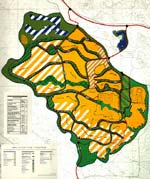 (Moshe Safdie Associates) Master plan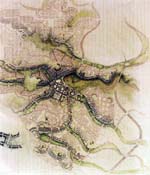 (Moshe Safdie Associates) Sketch of Modi'in's interlinking valleys (Moshe Safdie Associates) Sketch of valley and housing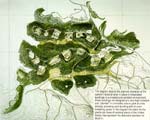 (Moshe Safdie Associates) Plan for industrial area, which includes numerous green spaces.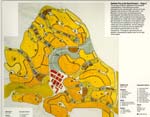 (Moshe Safdie Associates) Road plan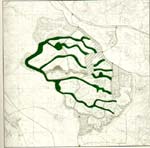 (Moshe Safdie Associates) Master plan highlighting valley linkages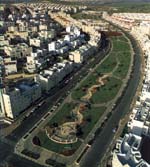 (Albatross) One of many green spaces in Modi'in (Moshe Safdie Associates) Sketch of housing stepped to site topography (Moshe Safdie Associates) Section of housing slope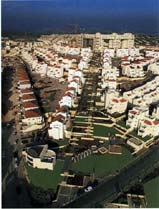 (Albatross) City view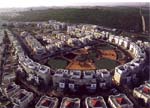 (Albatross) City view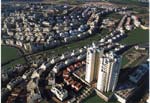 (Albatross) City view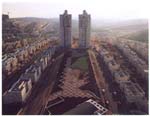 (Albatross) City view (Uri Shitreet) Stepped housing designed by architect Uri Shitreet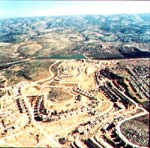 (Albatross) Aerial view of Modi'in during early stages of construction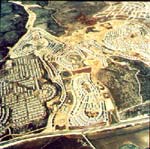 (Albatross) Aerial view of Modi'in during early stages of construction |
© 2002 ArchNewsNow.com